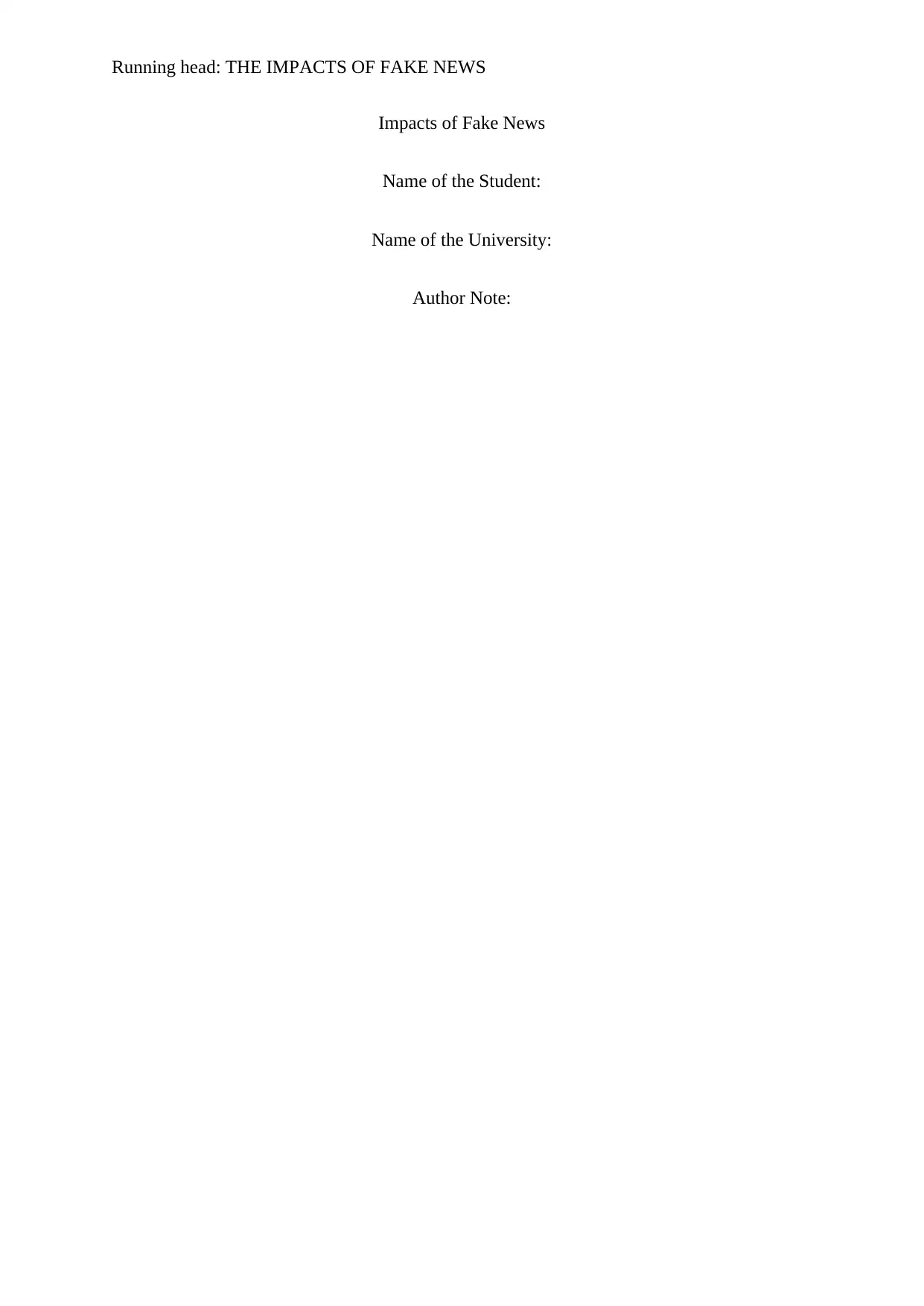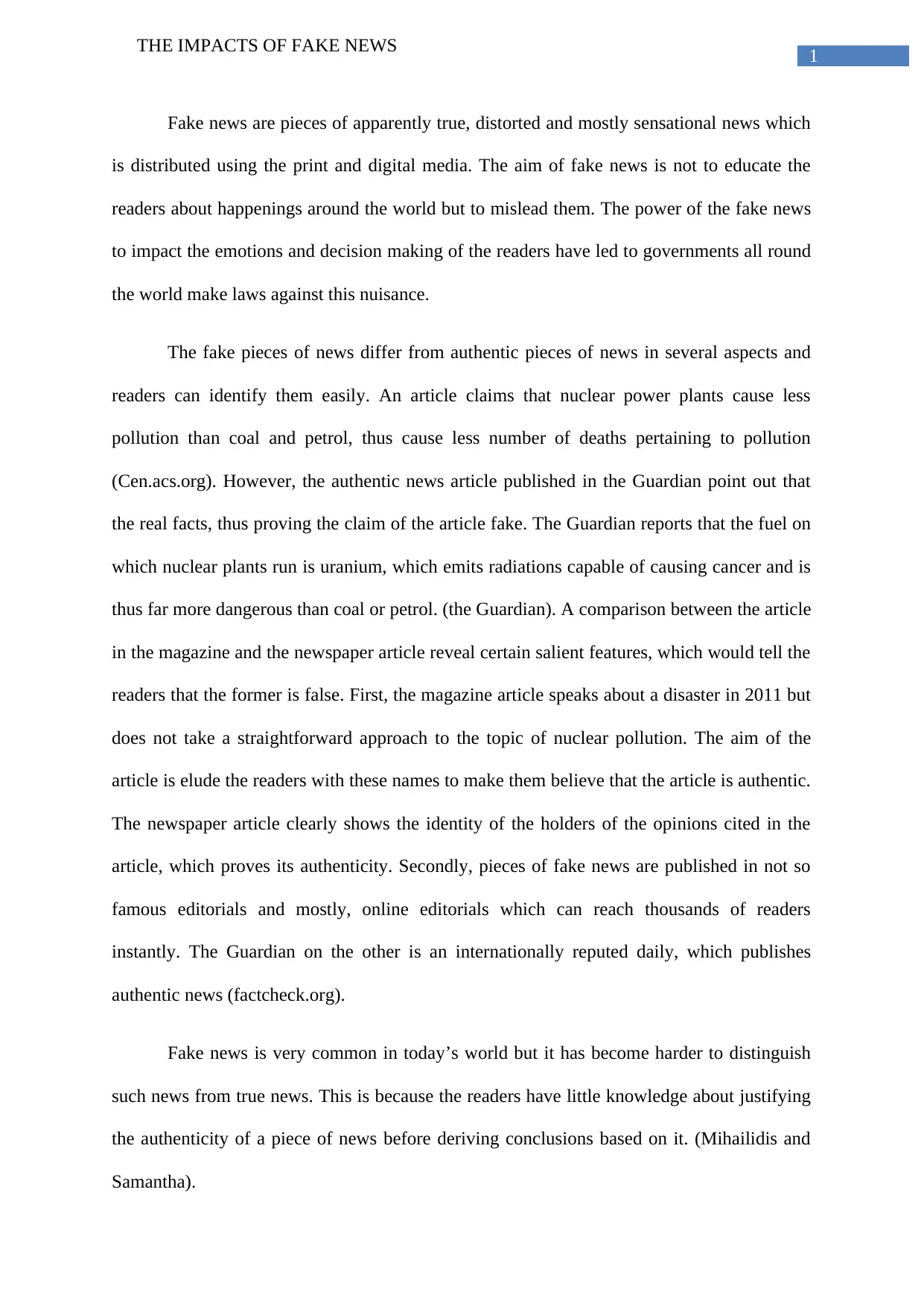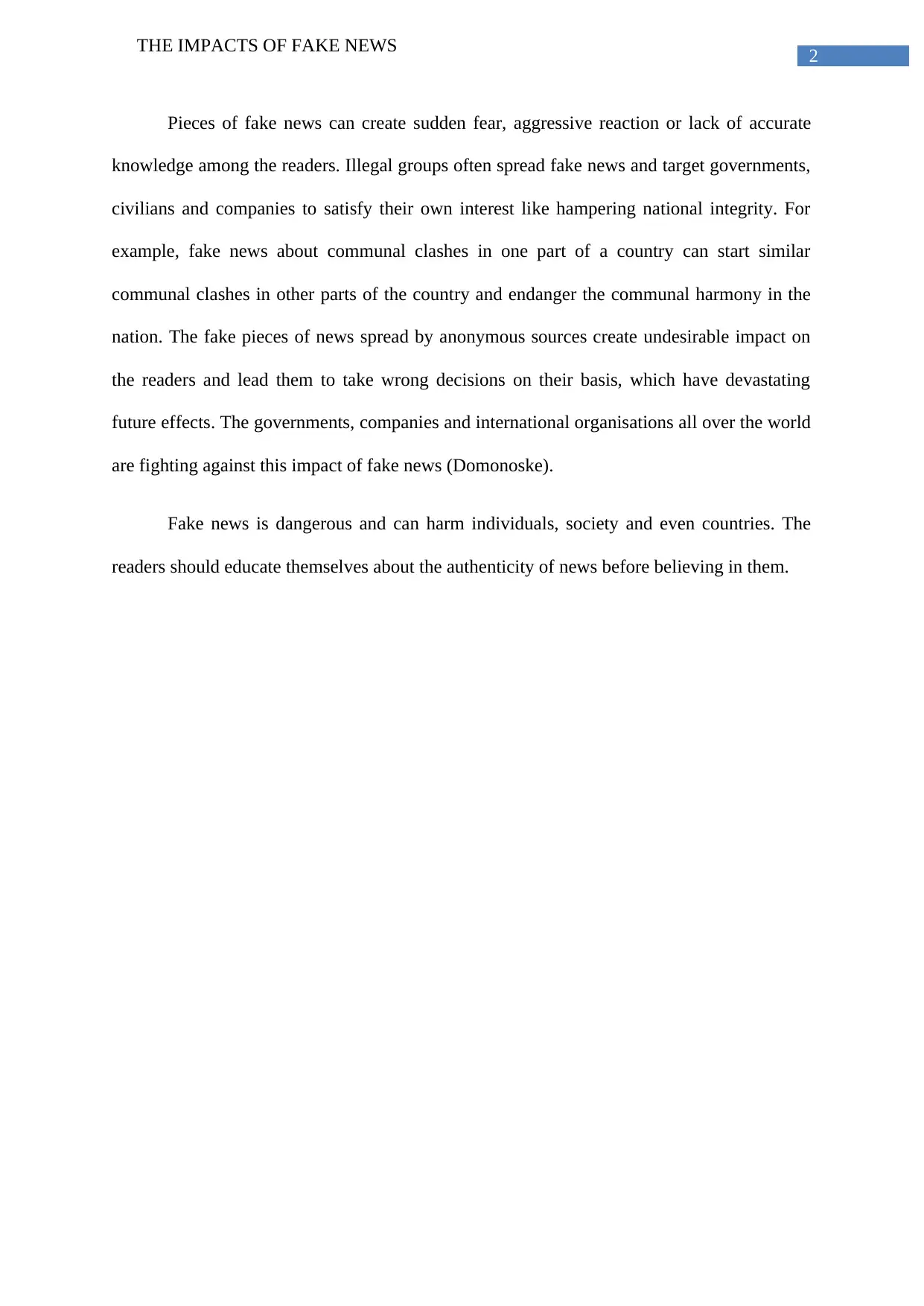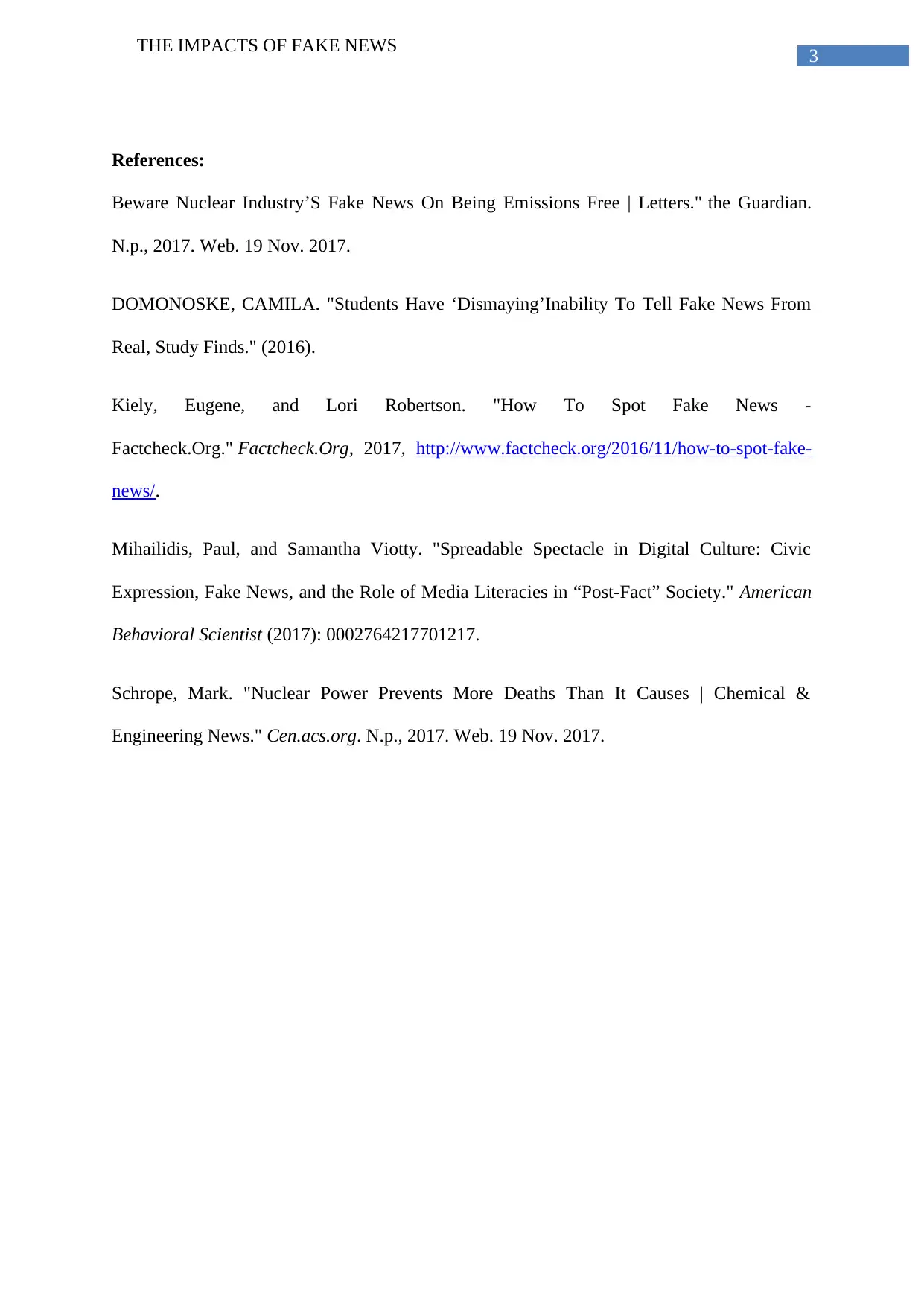Essay Analyzing the Impacts and Dangers of Fake News
VerifiedAdded on 2020/04/15
|4
|731
|99
Essay
AI Summary
This essay explores the multifaceted impacts of fake news, which is defined as distorted or sensationalized information disseminated through print and digital media with the intent to mislead. The essay highlights the distinction between fake and authentic news, providing examples to illustrate how readers can identify false information. It discusses the role of sources, publication platforms, and the readers' knowledge in evaluating the authenticity of news. The essay further examines the potential consequences of fake news, including the creation of fear, aggressive reactions, and inaccurate knowledge, which can lead to poor decision-making and societal harm. It emphasizes the efforts of governments, companies, and international organizations in combating the impact of fake news and concludes by urging readers to prioritize media literacy and critically assess the veracity of information before accepting it. The essay references several sources to support its claims and provide context.
1 out of 4




![[object Object]](/_next/static/media/star-bottom.7253800d.svg)